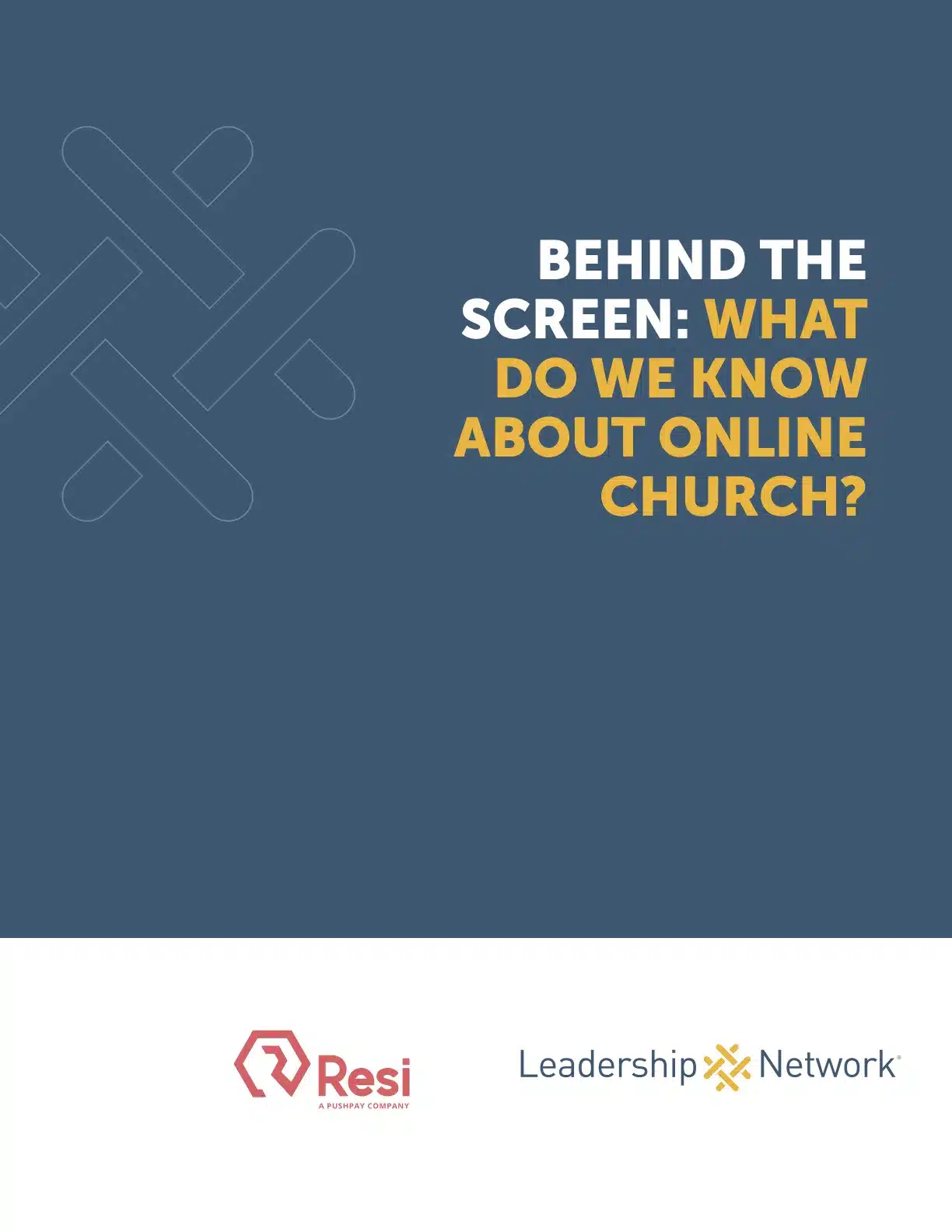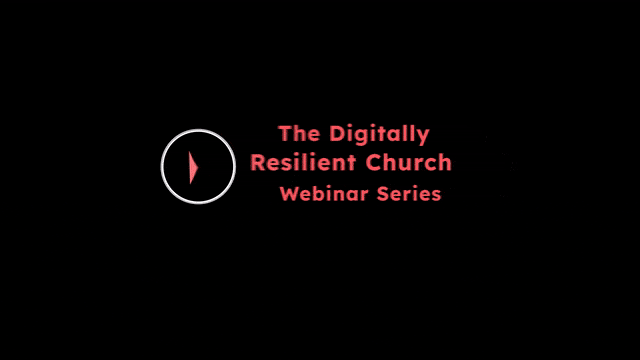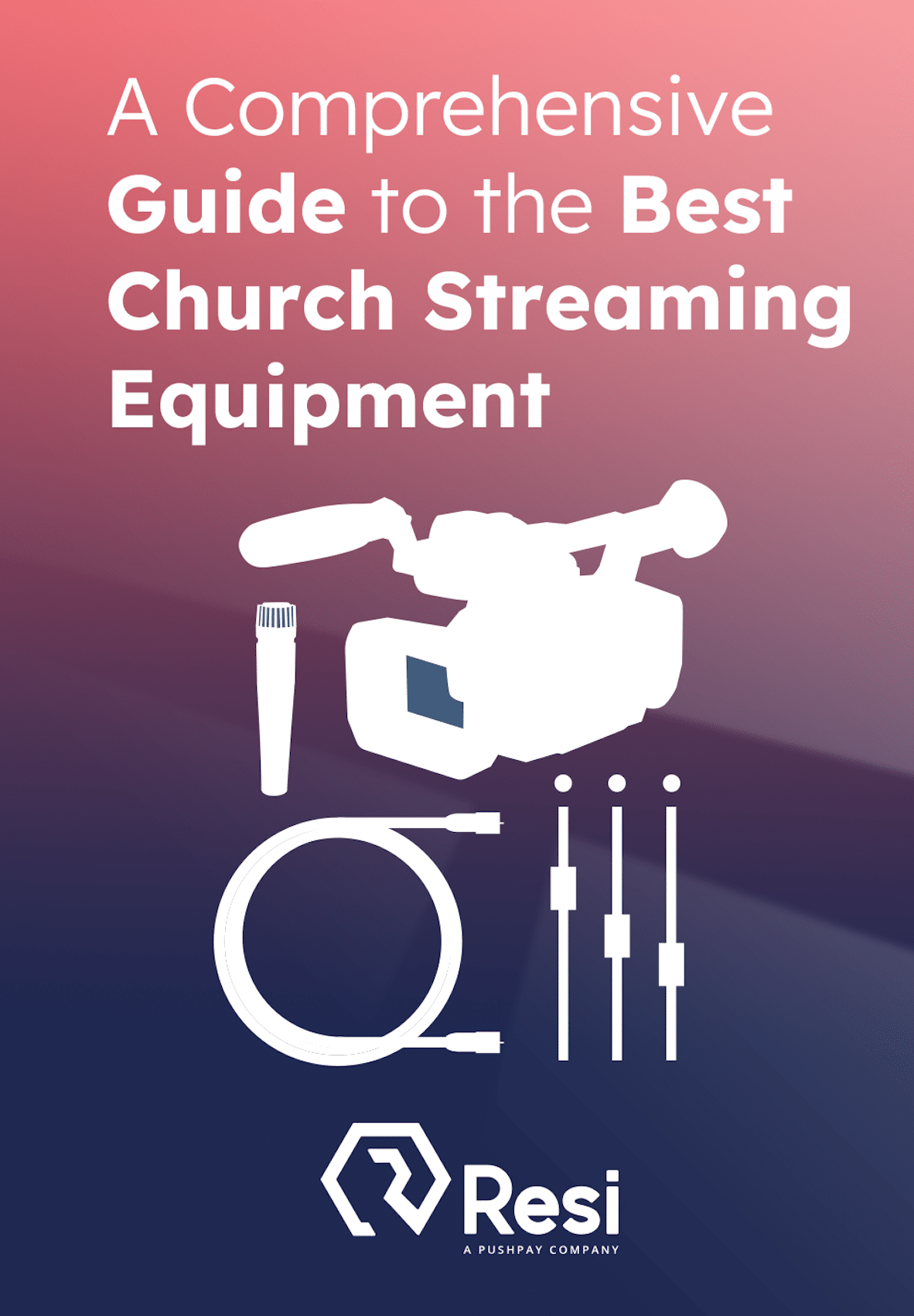
Pastor, let’s be honest for a second. It’s very easy to be threatened by digital ministry. But should we be?
Pushpay has released some phenomenal stats in recent months. 91% of churches surveyed say their ministry is “hybrid,” with 90% reporting that their church broadcasts church services online. On the first appearance, it would seem that churches are leaning into digital ministry. The lockdown brought churches to the tipping point of streaming their services and offering their media on-demand.
There’s more to church than that Sunday 9 a.m. worship service. But what does community—and even discipleship—look like digitally?
Behind the Screen: What Do We Know About Online Church?
See our findings about online church and gain important insight into your online audience.
Download for free!
Digital ministry can enhance physical outreach instead of competing with it. While streaming church services may seem to conflict with in-person attendance, research reveals that many first-time guests watch online services multiple times before visiting in person. Therefore, broadcasting services may cater to those preferring home comfort, yet ultimately attract new visitors to the physical church building.
Sunday Service + Discipleship = Church.
Let’s move past the traditional church service and delve into the realm of discipleship. Can a pastor effectively disciple someone digitally?
Many pastors I’ve spoken to acknowledge the potential, yet with a caveat that it may not match the depth of in-person connections. Some remain skeptical of digital discipleship, arguing that true discipleship thrives within physical communities – a valid perspective! The essence of discipleship lies in community. It appears that most pastors are apprehensive about embracing the concept of a digital community.
A digitally resilient church fully embracing the hybrid model prioritizes digital community instead of shying away from it out of fear.
Digital complements physical by connecting people 24x7x365.
By the way, this is a Biblical concept. According to Acts 2:46-47, the early church met daily in the temple and their homes. It would be great in 2024 if our churches could meet daily, but there is a cultural limitation here. Work and school are five days a week. Nothing is seven days a week. But, thanks to the smartphones we all have in our pockets, digital community is a viable option.
Interestingly, in 2023, US Surgeon General Vivek Murthy wrote about the “Epidemic of Loneliness” facing many of today’s teenagers. In his presentation, he listed six pillars that he suggested we use to overcome the epidemic of loneliness, and “more effective use of digital community” is listed as number four. Even the Surgeon General acknowledges the value of digital communities in promoting health and well-being.
Digital complements physical by slowly building trust.
People come to your physical building, and chances are your church has some sort of first-time guest (or welcome) form for visitors to fill out. You’ll get a name, and an email address. But how often have you seen these first-time guests become one-hit wonders that never return?
While first impressions physically happen during a Sunday morning worship service, digital interactions and engagements can exist for months in digital community. People in your church can build discipleship-level relationships digitally by utilizing digital community.
Best Livestreaming Equipment
Discover what top-rated equipment we recommend adding to your church streaming toolkit.
Download for free!
Digital community gives people time to build trust slowly. This is why people watch church services online at least four times before visiting your physical building—they simply don’t trust you yet. But the feasability of digital allows people to connect often in hopes of building up trust. And digital gives time for that trust to be built.
Digital complements physical by doing something different than the buildings.
Consider this: What if the digital realm served not only as a virtual meeting place, but also as a dynamic network for initiating and supporting physical connections? The potential here once again revolves around fostering relationships. Churches such as First Capital Christian Church in Corydon, Indiana, excel in leveraging their online services to bridge the gap between the virtual and physical church spaces, establishing microsites in homes and other community-centered locations.
Pastor, you might feel threatened by implementing a microsite strategy that seems to draw people away from your physical space. However, consider that empowering microsites can actually encourage attendees and lay individuals to take on more responsibility in nurturing and guiding others in their faith journey. Instead of being upset that people aren’t physically present, focus on the fact that they may lack a spiritual purpose when they’re not there. Microsites offer a solution to this issue.
Doing something different reaches someone different.
Whether we want to admit it or not, COVID has changed us culturally. 2024 has introduced a new term acknowledging this major shift, the “introvert economy.” Worth.com defines this: “The pandemic has catalyzed a shift in consumer behavior, giving rise to what’s now termed the ‘introvert economy.’ This shift sees consumers increasingly favoring the comfort of their homes over traditional social outings—a trend with significant implications for businesses across industries.”
Bloomberg was one of the first to detail this shift to an introverted mindset (here and here). Acknowledge that the traditional in-person church model, even in 2024, starkly contrasts with this introverted economy. By integrating a microsite approach with a traditional church model, a stronger framework emerges. This approach caters to both extroverts and introverts. Incorporating a digital discipleship strategy further cements the overall plan. This strategy acknowledges the diverse audience by understanding that various individuals are engaged through different means, enriching the outreach beyond a single demographic.
And that’s the beauty of hybrid. Not just falling in love with your building and doing whatever it takes for your building to succeed but also recognizing that different church strategies can complement each other for the cause of Christ. To learn more, check out Resi’s Digitally Resilient Church Webinar Series.








